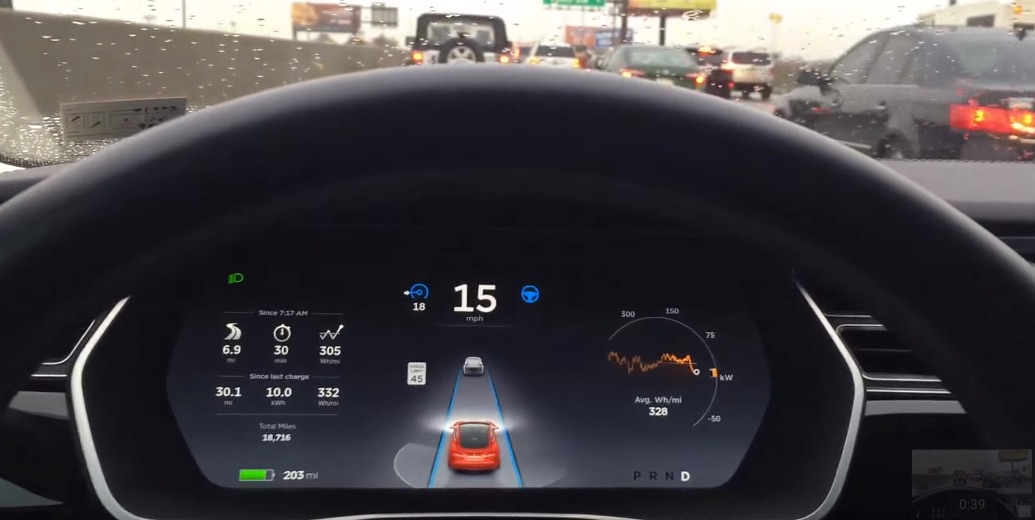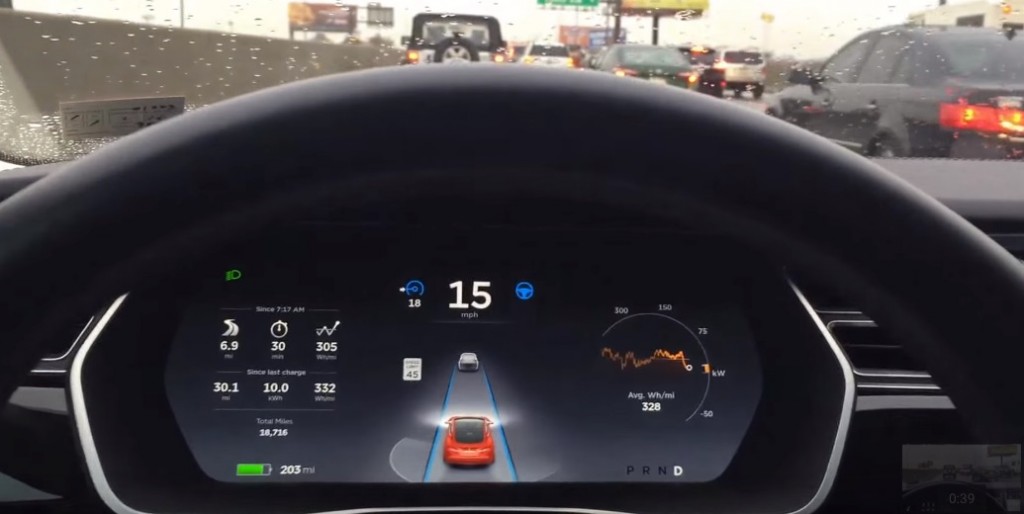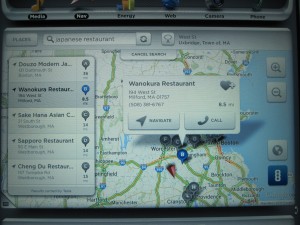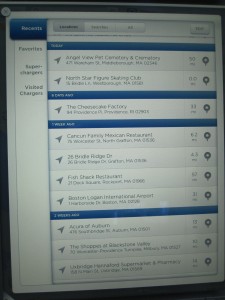News
How will Tesla Version 8 compare to current Autopilot in the real world?

Tesla’s upcoming Version 8 software will be the company’s most significant Autopilot upgrade since its October 2014 initial release, but how will these updates compare to current Autopilot behavior in the real world?
This will be the first time the company will switch from using the vehicle’s front-facing camera as the core hardware responsible for visual image recognition, to radar technology which will now become the primary sensor used in creating a virtual picture of the vehicle’s surroundings.
With these improvements, to be rolled out via an over-the-air software update in the coming weeks, Model S equipped with the Autopilot hardware suite and Model X should theoretically be able to handle emergency braking situations with more precision, provide a smoother Traffic Aware Cruise Control (TACC) experience, take highway exits on its own, and provide drivers and passengers with an overall safer experience.
Let’s take a look at each of these features and see how Autopilot in Version 8 will differ from current Version 7 capabilities.
Automatic Emergency Braking
Following the much publicized death of Joshua Brown after his Model S crashed into the side of a tractor trailer while driving on Autopilot, reliability of Autopilot’s Automatic Emergency Braking (AEB) feature was immediately put to question. Tesla released a statement stating that the high, white side of the tractor trailer, combined with a radar signature that would have looked very similar to an overhead sign, caused automatic braking not to fire. “Since January 2016, Autopilot activates automatic emergency braking in response to any interruption of the ground plane in the path of the vehicle that cross-checks against a consistent radar signature,” said Tesla.
Spy shots taken from the Naval Air Station reveal Tesla was testing and calibrating its AEB system this past summer. But despite the tests which seemingly show a Model S automatically braking in a staged collision event, Tesla has been overly cautious when it comes to activation of its AEB feature. AEB is reliant on imagery received from its front-facing camera, and supplemented by radar input, to decide on the degree of confidence that would trigger a braking event.
Some Tesla owners have even taken it upon themselves to stage scenarios that would seemingly trigger the AEB response of the vehicle, but to no avail leaving further mystery as to how AEB works.
The current Autopilot system under Version 7 is limited in its ability to reliably detect people or pinpoint false positives such as reflective objects that may appear larger than they are. Tesla uses the concave bottom of a soda can as an example. When the radar signal is reflected back from the can’s bottom dish-shaped surface, the reflected signal is amplified to many times its actual size leading the radar to believe there’s a large object before it. Because of that, programming the AEB system to suddenly engage could lead to a dangerous situation so Tesla decided to limit the scenarios that could actually trigger an automatic emergency braking response.
However, Version 8 will combine the power of fleet learning with “radar snapshots” to improve the vehicle’s ability to more accurately depict the circumstances of an event. In other words, we can expect Autopilot under Version 8 to have a much higher degree of confidence when it comes to engaging automatic emergency braking. Tesla CEO Elon Musk believes this set up will provide safety improvements by a factor of three over existing Autopilot.
Traffic Aware Cruise Control
Beyond being able to track a vehicle that’s directly in front of the car, Version 8 of Autopilot will also be able to see the vehicle ahead of that. Tesla describes this update as follows: Tesla will also be able to bounce the radar signal under a vehicle in front – using the radar pulse signature and photon time of flight to distinguish the signal – and still brake even when trailing a car that is opaque to both vision and radar. The car in front might hit the UFO in dense fog, but the Tesla will not.
The improvement will lead to smoother braking events when TACC is engaged since Autopilot will no longer solely rely on the actions from the vehicle before it. If a hard braking event happened in front of the vehicle that Autopilot is immediately tracking, Version 8 will be able to identify it and slow the Model S (or Model X) even before the vehicle directly ahead may have applied the brakes.
The following video captures an incident whereby the vehicle being tracked by Version 7 of Autopilot could not see the hard braking event that took place two cars ahead. TACC seemingly did not have enough time to stop the Model S.
Being able to see two cars ahead in Version 8 will provide a smoother TACC experience and increased safety.
Improved Auto Lane Change and Freeway Exiting
What we’re particularly excited about is the new feature in Version 8.1 that will allow an Autopilot-equipped Model S and Model X to take highway exits using the onboard navigation system.
Currently, Version 7 of Autopilot is capable of handling lane changes when the driver explicitly uses the turn signal stalk. Signaling left and the vehicle will make a left lane change, and vice versa. However with the ability to punch in a destination through Tesla Nav and have the vehicle assist with freeway exiting, assuming that’s part of the route, in our minds, Tesla is taking a critical step towards the ultimate goal of building fully autonomous self-driving vehicles. It’s a small step, but nonetheless it’s a notable step.
Photo credit: Rob M.
Full details of Tesla Version 8 can be found here.

News
Tesla Full Self-Driving v14.2 – Full Review, the Good and the Bad

Tesla rolled out Full Self-Driving version 14.2 yesterday to members of the Early Access Program (EAP). Expectations were high, and Tesla surely delivered.
With the rollout of Tesla FSD v14.2, there were major benchmarks for improvement from the v14.1 suite, which spanned across seven improvements. Our final experience with v14.1 was with v14.1.7, and to be honest, things were good, but it felt like there were a handful of regressions from previous iterations.
While there were improvements in brake stabbing and hesitation, we did experience a few small interventions related to navigation and just overall performance. It was nothing major; there were no critical takeovers that required any major publicity, as they were more or less subjective things that I was not particularly comfortable with. Other drivers might have been more relaxed.
With v14.2 hitting our cars yesterday, there were a handful of things we truly noticed in terms of improvement, most notably the lack of brake stabbing and hesitation, a major complaint with v14.1.x.
However, in a 62-minute drive that was fully recorded, there were a lot of positives, and only one true complaint, which was something we haven’t had issues with in the past.
The Good
Lack of Brake Stabbing and Hesitation
Perhaps the most notable and publicized issue with v14.1.x was the presence of brake stabbing and hesitation. Arriving at intersections was particularly nerve-racking on the previous version simply because of this. At four-way stops, the car would not be assertive enough to take its turn, especially when other vehicles at the same intersection would inch forward or start to move.
This was a major problem.
However, there were no instances of this yesterday on our lengthy drive. It was much more assertive when arriving at these types of scenarios, but was also more patient when FSD knew it was not the car’s turn to proceed.
Can report on v14.2 today there were ZERO instances of break stabbing or hesitation at intersections today
It was a significant improvement from v14.1.x
— TESLARATI (@Teslarati) November 21, 2025
This improvement was the most noticeable throughout the drive, along with fixes in overall smoothness.
Speed Profiles Seem to Be More Reasonable
There were a handful of FSD v14 users who felt as if the loss of a Max Speed setting was a negative. However, these complaints will, in our opinion, begin to subside, especially as things have seemed to be refined quite nicely with v14.2.
Freeway driving is where this is especially noticeable. If it’s traveling too slow, just switch to a faster profile. If it’s too fast, switch to a slower profile. However, the speeds seem to be much more defined with each Speed Profile, which is something that I really find to be a huge advantage. Previously, you could tell the difference in speeds, but not in driving styles. At times, Standard felt a lot like Hurry. Now, you can clearly tell the difference between the two.
It seems as if Tesla made a goal that drivers should be able to tell which Speed Profile is active if it was not shown on the screen. With v14.1.x, this was not necessarily something that could be done. With v14.2, if someone tested me on which Speed Profile was being used, I’m fairly certain I could pick each one.
Better Overall Operation
I felt, at times, especially with v14.1.7, there were some jerky movements. Nothing that was super alarming, but there were times when things just felt a little more finicky than others.
v14.2 feels much smoother overall, with really great decision-making, lane changes that feel second nature, and a great speed of travel. It was a very comfortable ride.
The Bad
Parking
It feels as if there was a slight regression in parking quality, as both times v14.2 pulled into parking spots, I would have felt compelled to adjust manually if I were staying at my destinations. For the sake of testing, at my first destination, I arrived, allowed the car to park, and then left. At the tail-end of testing, I walked inside the store that FSD v14.2 drove me to, so I had to adjust the parking manually.
This was pretty disappointing. Apart from parking at Superchargers, which is always flawless, parking performance is something that needs some attention. The release notes for v14.2. state that parking spot selection and parking quality will improve with future versions.
Any issues with parking on your end? 14.1.7 didn’t have this trouble with parking pic.twitter.com/JPLRO2obUj
— TESLARATI (@Teslarati) November 21, 2025
However, this was truly my only complaint about v14.2.
You can check out our full 62-minute ride-along below:
Elon Musk
SpaceX issues statement on Starship V3 Booster 18 anomaly
The incident unfolded during gas-system pressure testing at the company’s Massey facility in Starbase, Texas.

SpaceX has issued an initial statement about Starship Booster 18’s anomaly early Friday. The incident unfolded during gas-system pressure testing at the company’s Massey facility in Starbase, Texas.
SpaceX’s initial comment
As per SpaceX in a post on its official account on social media platform X, Booster 18 was undergoing gas system pressure tests when the anomaly happened. Despite the nature of the incident, the company emphasized that no propellant was loaded, no engines were installed, and personnel were kept at a safe distance from the booster, resulting in zero injuries.
“Booster 18 suffered an anomaly during gas system pressure testing that we were conducting in advance of structural proof testing. No propellant was on the vehicle, and engines were not yet installed. The teams need time to investigate before we are confident of the cause. No one was injured as we maintain a safe distance for personnel during this type of testing. The site remains clear and we are working plans to safely reenter the site,” SpaceX wrote in its post on X.
Incident and aftermath
Livestream footage from LabPadre showed Booster 18’s lower half crumpling around the liquid oxygen tank area at approximately 4:04 a.m. CT. Subsequent images posted by on-site observers revealed extensive deformation across the booster’s lower structure. Needless to say, spaceflight observers have noted that Booster 18 would likely be a complete loss due to its anomaly.
Booster 18 had rolled out only a day earlier and was one of the first vehicles in the Starship V3 program. The V3 series incorporates structural reinforcements and reliability upgrades intended to prepare Starship for rapid-reuse testing and eventual tower-catch operations. Elon Musk has been optimistic about Starship V3, previously noting on X that the spacecraft might be able to complete initial missions to Mars.
Investor's Corner
Tesla analyst maintains $500 PT, says FSD drives better than humans now
The team also met with Tesla leaders for more than an hour to discuss autonomy, chip development, and upcoming deployment plans.

Tesla (NASDAQ:TSLA) received fresh support from Piper Sandler this week after analysts toured the Fremont Factory and tested the company’s latest Full Self-Driving software. The firm reaffirmed its $500 price target, stating that FSD V14 delivered a notably smooth robotaxi demonstration and may already perform at levels comparable to, if not better than, average human drivers.
The team also met with Tesla leaders for more than an hour to discuss autonomy, chip development, and upcoming deployment plans.
Analysts highlight autonomy progress
During more than 75 minutes of focused discussions, analysts reportedly focused on FSD v14’s updates. Piper Sandler’s team pointed to meaningful strides in perception, object handling, and overall ride smoothness during the robotaxi demo.
The visit also included discussions on updates to Tesla’s in-house chip initiatives, its Optimus program, and the growth of the company’s battery storage business. Analysts noted that Tesla continues refining cost structures and capital expenditure expectations, which are key elements in future margin recovery, as noted in a Yahoo Finance report.
Analyst Alexander Potter noted that “we think FSD is a truly impressive product that is (probably) already better at driving than the average American.” This conclusion was strengthened by what he described as a “flawless robotaxi ride to the hotel.”
Street targets diverge on TSLA
While Piper Sandler stands by its $500 target, it is not the highest estimate on the Street. Wedbush, for one, has a $600 per share price target for TSLA stock.
Other institutions have also weighed in on TSLA stock as of late. HSBC reiterated a Reduce rating with a $131 target, citing a gap between earnings fundamentals and the company’s market value. By contrast, TD Cowen maintained a Buy rating and a $509 target, pointing to strong autonomous driving demonstrations in Austin and the pace of software-driven improvements.
Stifel analysts also lifted their price target for Tesla to $508 per share over the company’s ongoing robotaxi and FSD programs.











